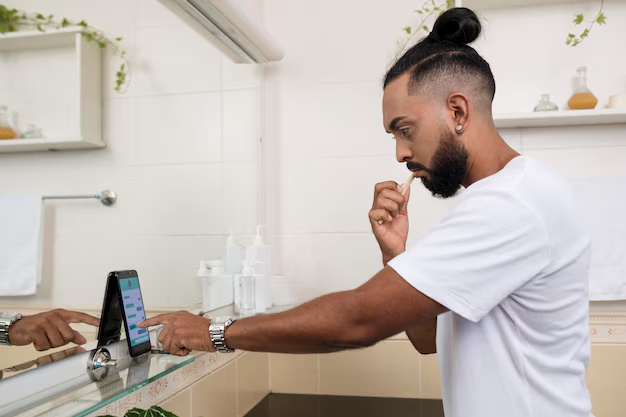🧊 Essential Guide: Easily Shutting Off Water to Your Refrigerator 📏
If you're facing a leaky refrigerator or planning to move it for cleaning or repair, knowing how to shut off the water supply is a critical skill. This guide walks you through the process with clear instructions, practical tips, and safety advice, ensuring your task is hassle-free and effective.
🛠️ Why You Might Need to Shut Off the Water
Understanding when and why to halt the flow of water to your refrigerator can save you from unnecessary stress and possible damage. Here are some reasons you might need to do this:
- Leaks: Leaky refrigerators can lead to costly damage and high water bills.
- Repairs or Maintenance: Technicians often require the water to be shut off to complete their work.
- Relocation: Moving your refrigerator either for cleaning or home rearrangement.
- Prevent Water Damage: In emergencies, shutting off the water can prevent floors or walls from getting soaked.
🔍 Locating the Water Shut-Off Valve: Types and Common Locations
The first step in shutting off water to a refrigerator is to locate the water shut-off valve. This can sometimes be tricky, especially in older homes or installations. Here are common places and valve types to look out for:
Under-Sink Shut-Off Valves
Many modern kitchens have water lines connected directly under the sink. In this setup, the valve may be:
- Mounted on the wall behind the refrigerator.
- Beneath the kitchen sink, where the dishwasher is also likely connected.
- Hidden behind cabinets, accessible through a cut-out section in the wood.
Basement or Crawlspace Valves
For homes with lower-floor access:
- Basement: The valve may be found on the ceiling or along exposed water lines.
- Crawlspace: Here the challenge is limited access, so it's beneficial to have a flashlight handy.
Behind the Refrigerator
Some refrigerators have visible valves directly behind the appliance. Ensure the fridge is unplugged before moving it away from the wall to avoid electrical hazards.
Types of Shut-Off Valves
- Ball Valve: A lever-style handle easily turned to stop water flow.
- Gate Valve: Round knob that requires several full turns to shut.
- Saddle Valve: Often found in older homes; a clamp type valve on a pipe.
🔑 How to Shut Off the Water Supply
Once you've located the valve, the next step is to shut it off correctly:
Step-by-Step Instructions
Identify the Valve Type
- Ball Valve: Turn the lever to a perpendicular position with the pipe.
- Gate Valve: Rotate clockwise until fully closed.
- Saddle Valve: Tighten the valve by turning clockwise.
Verify Water Disconnection
- Check by attempting to dispense water from the refrigerator. No water should flow if the valve is properly closed.
Double Check for Leaks
- Inspect the hose connections for any signs of leakage and tighten if necessary.
Secure the Area
- Ensure the refrigerator and surrounding area are dry to prevent slips.
🏡 Common Challenges and Solutions
- Valve Stuck: A stuck valve can often be loosened with a few drops of oil or by gently tapping around its edges.
- Difficult Access: Employ extension tools or mirror devices to better view hard-to-reach areas.
- Unknown Valve Location: If you're unsure where the valve is, tracing the water line from where it enters the kitchen or consulting the plumbing layout of your home can help.
💡 Additional Tips for Home Maintenance
Regular maintenance and knowing your appliance’s setup can save you from reversible damage. Here are tips to keep your kitchen running smoothly:
- Regular Inspections: Bi-annual checks on your refrigerator and its connections can catch potential issues early.
- Document Locations: Label shut-off valves for easy identification in emergencies.
- Educate Household Members: Ensure everyone knows where the valves are and how to shut them off.
🔎 FAQs and Troubleshooting
What if the water doesn’t stop when the valve is closed?
This may indicate a faulty valve. Consider replacing the valve if it does not effectively stop the water flow.
Can I shut off the main water supply instead?
While feasible, this will shut off water to the entire house. It’s less convenient and should be used only if specific valve access isn’t possible.
Is professional help required to manipulate these valves?
Most homeowners can safely manage this task. However, if unsure or facing difficulties, consulting a plumber may be beneficial.
📌 Quick Reference: Shutting Off Water to Your Refrigerator
Here’s a concise summary to keep you on track!
- Locate the valve:
- Under-sink
- Basement/Crawlspace
- Behind the refrigerator
- Tools you might need:
- Flashlight
- Towels
- Wrench or pliers for leverage
- Turning off the water:
- Ball, Gate, or Saddle: Adjust accordingly and verify the shutdown.
- Checklist:
- Confirm no water flows from dispenser.
- Inspect hose connections.
- Maintain dry surroundings.
Taking a proactive approach to home maintenance ensures not only the longevity of your appliances but also your peace of mind. Mastering these small but vital skills can make a world of difference in your day-to-day life. Enjoy your newly enhanced understanding and confidence in managing your refrigerator's water supply! 🍽️
